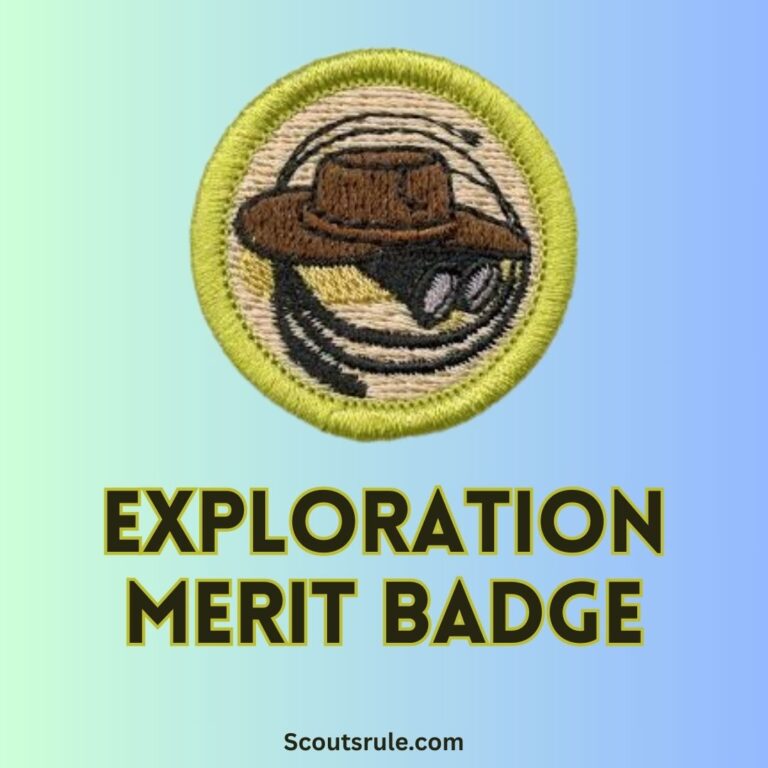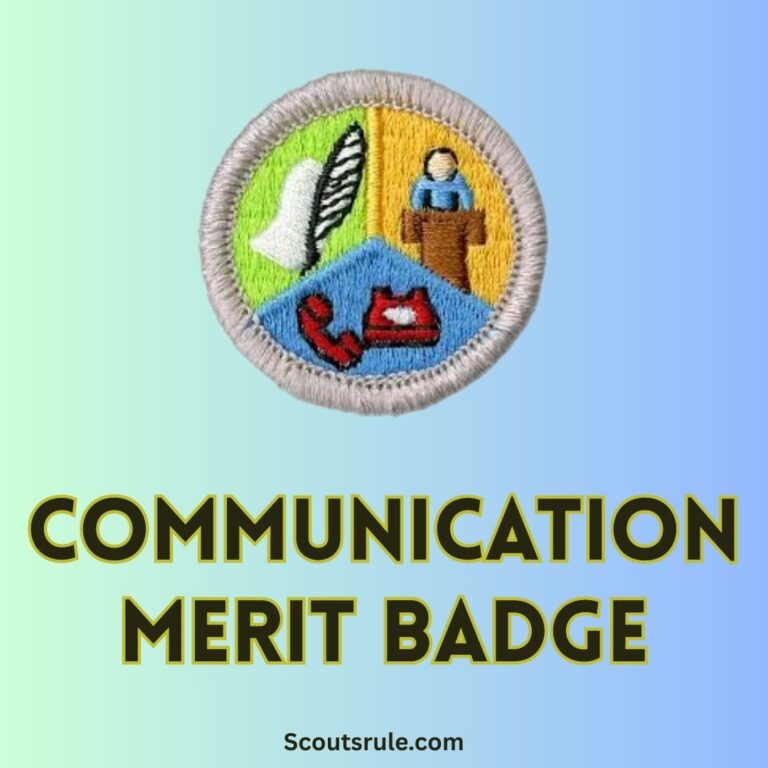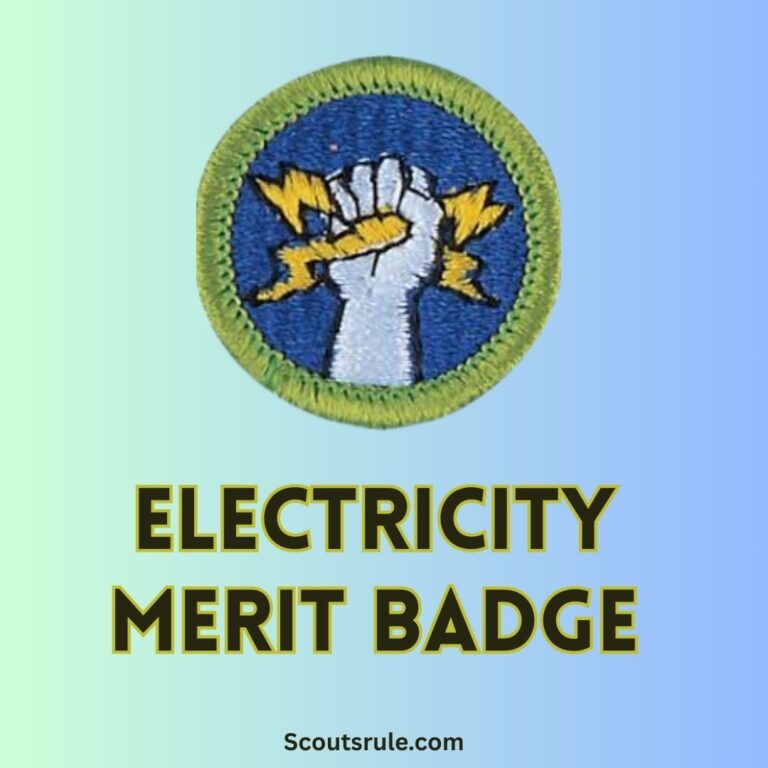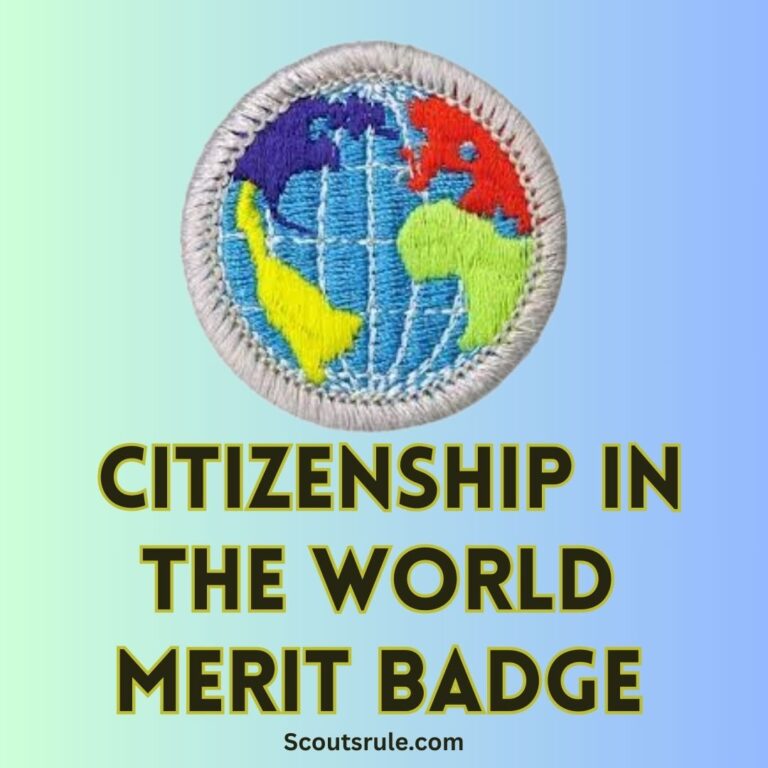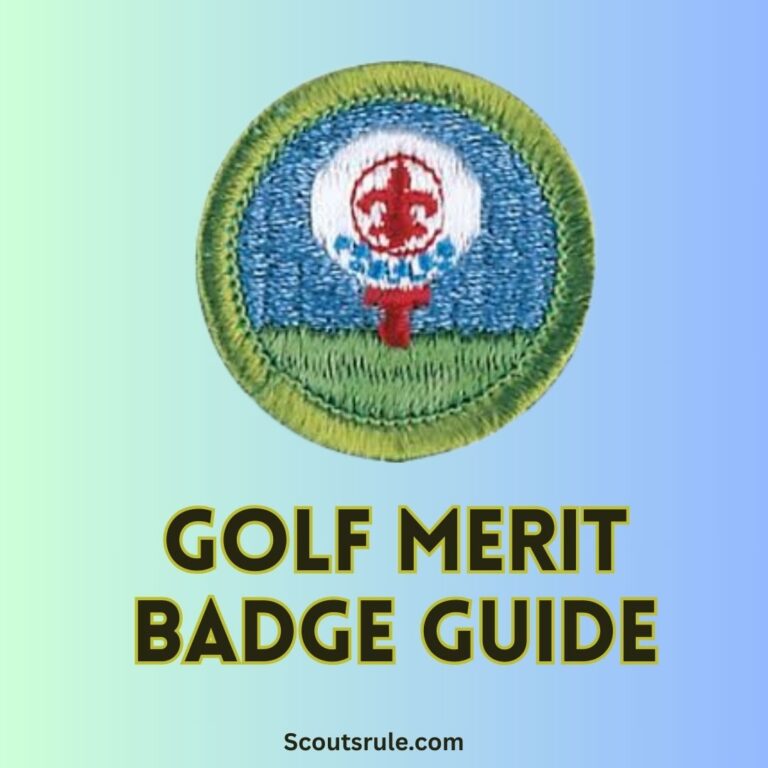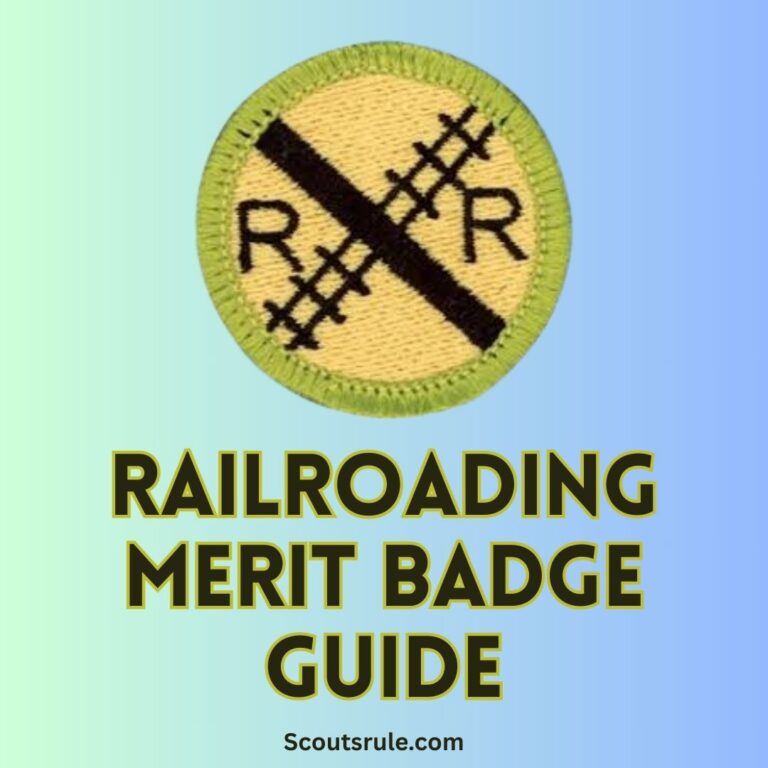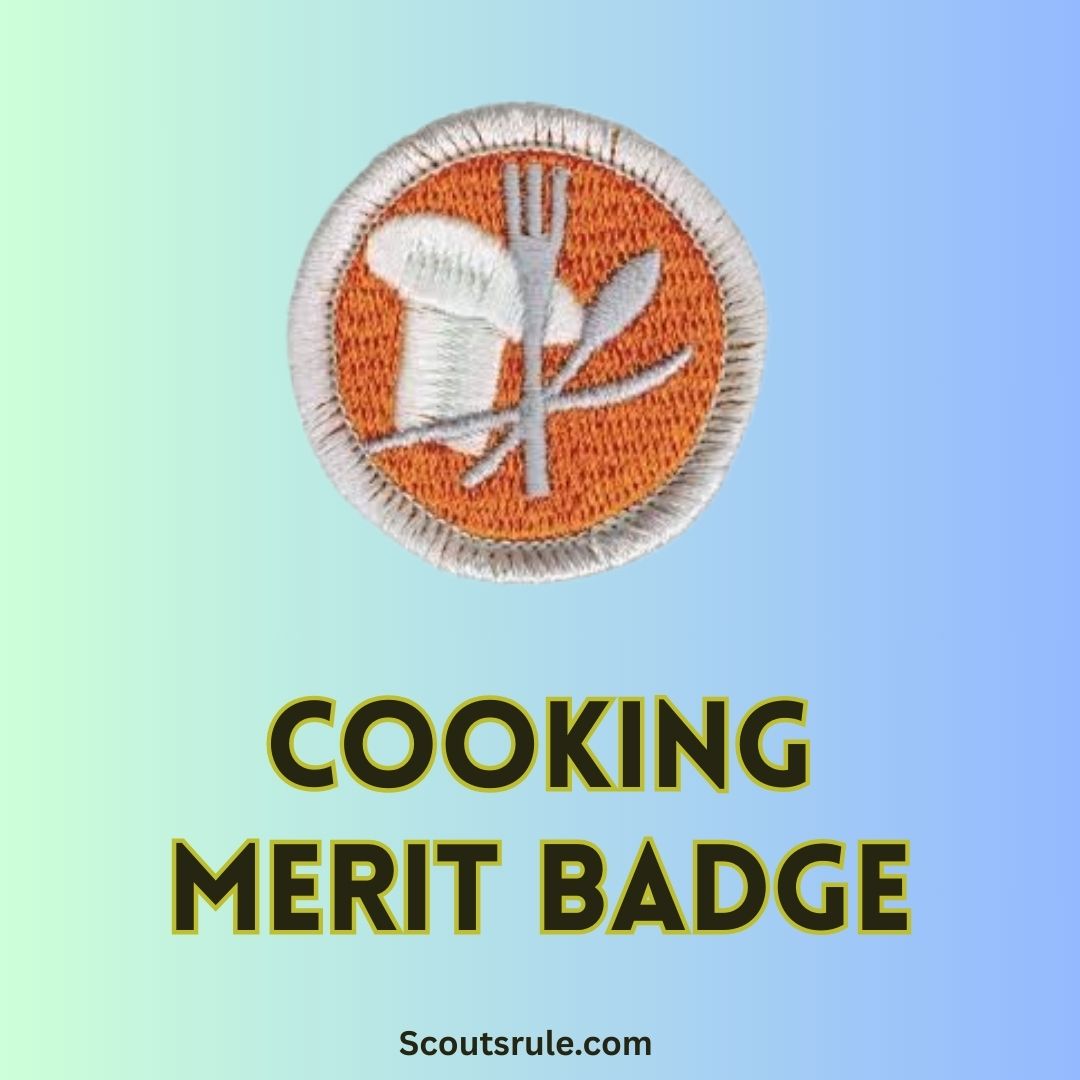
Cooking is both a vital life skill and an art form. Earning the Cooking Merit Badge means learning safe kitchen practices; understanding nutrition; mastering various cooking methods; planning, preparing, and evaluating meals; and even exploring potential careers in the culinary world. Whether you’re cooking at home, planning a camp menu, or whipping up a trail meal on a backpacking trip, this guide will walk you through every requirement and offer practical tips along the way.
Post Contents
- 1. Health and Safety
- 1(a) Understanding and Managing Common Cooking Hazards
- 1(b) First Aid and Prevention for Common Kitchen Injuries and Illnesses
- 1(c) Safe Handling of Meats, Dairy, and Vegetables
- 1(d) Understanding Food Allergies, Intolerances, and Related Illnesses
- 1(e) The Significance of Food Labels and Identifying Common Allergens
- 2. Nutrition
- 2(a) MyPlate Food Guide and Daily Servings
- 2(b) Understanding the Importance of Limiting Oil and Sugar Intake
- 2(c) Creating a Personalized Meal Plan Based on Daily Activity and Caloric Needs
- 2(d) Evaluating and Improving Eating Habits Using MyPlate Guidelines
- 2(e) Understanding Nutritional Concepts and Food Label Terms
- 3. Cooking Basics
- 4. Cooking at Home
- 5. Camp Cooking
- 5(a) Planning and Preparing Five Meals for a Camping Trip
- 5(b) Creating Recipes, a Shopping List, and a Budget for a Camping Trip
- 5(d) Outdoor Cooking Techniques for a Camping Trip with Patrol
- 5(e) Preparing and Serving an Outdoor Dessert or Snack
- 5(f) Evaluation and Reflection on Outdoor Meals
- 5(g) Responsible Cleanup and Waste Management
- 5(h) Adherence to the Outdoor Code and No-Trace Principles
- 6. Trail and Backpacking Meals
- 7. Exploring Food-Related Careers
- Frequently Asked Questions (FAQ)
- Conclusion
1. Health and Safety
1(a) Understanding and Managing Common Cooking Hazards
Cooking involves heat, sharp tools, and raw foods—all of which can present hazards. Before you begin any culinary project, you need to be able to identify and minimize risks by:
- Recognizing Potential Hazards:
- Heat Risks: Open flames, boiling liquids, hot surfaces, and hot oil can cause burns or scalds.
- Sharp Tools: Knives and other cutting devices can cause accidental lacerations.
- Slips, Trips, and Falls: Spilled liquids or food debris can lead to slips.
- Cross-Contamination: Handling raw meats, dairy products, and vegetables without proper care can cause foodborne illnesses.
- Risk Mitigation:
- Keep your work area clean and well organized.
- Always use proper cutting techniques and carry out knife work away from your body.
- Use mitts or potholders when handling hot cookware.
- Store and handle food properly to avoid spoilage.
- Regularly clean and sanitize surfaces to prevent the spread of bacteria.
1(b) First Aid and Prevention for Common Kitchen Injuries and Illnesses
Knowing basic first aid—and how to prevent injuries—is critical in a busy kitchen.
Burns and Scalds
- Prevention:
- Use oven mitts and pot holders.
- Keep pot handles turned inward.
- Maintain a safe distance from open flames or hot surfaces.
- First Aid:
- Cool the burn immediately with running cool (not cold) water.
- Cover the burn with a clean, non‑stick bandage.
- Seek professional help if the burn is severe.
Cuts
- Prevention:
- Use a stable cutting board secured with a damp cloth.
- Always cut away from your body.
- First Aid:
- Clean the cut with soap and water.
- Apply pressure with a clean cloth; use a bandage if necessary.
- For deep cuts, seek medical attention.
Choking
- Prevention:
- Cut food into small pieces.
- Chew slowly and thoroughly.
- First Aid:
- Know how to perform the Heimlich maneuver.
- If a choking incident occurs, call for emergency help immediately.
Allergic Reactions
- Prevention:
- Identify common allergens in recipes.
- Ask guests about food intolerances or allergies.
- First Aid:
- Know how to use an epinephrine auto-injector (if prescribed).
- Call for medical assistance immediately if symptoms of a severe allergic reaction arise.
1(c) Safe Handling of Meats, Dairy, and Vegetables
Ensuring food safety in every step—from storage to preparation—is vital.
- Safe Storage and Transportation:
- Refrigerate perishable items promptly.
- Keep meats, dairy, and fresh produce separate during transport to avoid cross‑contamination.
- Preparation Guidelines:
- Thaw frozen foods safely (in the refrigerator or under cold water, never at room temperature).
- Use separate cutting boards for raw meats and vegetables.
- Cross-Contamination Prevention:
- Wash your hands thoroughly between handling different types of food.
- Sanitize surfaces and utensils after preparing raw meat or dairy.
1(d) Understanding Food Allergies, Intolerances, and Related Illnesses
It is essential to be aware of how food allergies and intolerances differ and how they can affect health.
- Food Allergies vs. Intolerances:
- Allergies involve an immune response and can cause life‑threatening reactions.
- Intolerances do not involve the immune system; they typically cause digestive discomfort.
- Food-Related Illnesses:
- Improper food handling can lead to illnesses like salmonella, E. coli infection, and listeriosis.
- Importance of Awareness:
- Always ask guests about food allergies.
- Label foods clearly if preparing meals for groups.
1(e) The Significance of Food Labels and Identifying Common Allergens
Food labels provide critical information that helps you make safe, healthy choices.
- Why Reading Food Labels Is Important:
- They provide ingredient lists, nutritional content, and allergen information.
- Awareness helps prevent accidental exposure to allergens like peanuts, eggs, dairy, gluten, and soy.
- Identifying Common Allergens:
- Look for declarations of common allergens and understand how the food was processed.
- Educate yourself on label terminology and certifications that indicate allergen-free products.
2. Nutrition
2(a) MyPlate Food Guide and Daily Servings
The MyPlate Food Guide is a simple visual tool that shows the five food groups and their proper proportions:
- Fruits: Include fresh, frozen, or canned fruits (without added sugars).
- Vegetables: Incorporate a variety of greens, reds, oranges, and other colored vegetables.
- Grains: Focus on whole grains like brown rice, whole wheat bread, and oats.
- Proteins: Consider lean meat, beans, tofu, nuts, and seeds.
- Dairy: Low‑fat or fat‑free milk, yogurt, and cheese are good choices.
2(b) Understanding the Importance of Limiting Oil and Sugar Intake
Excessive oil and sugar can lead to nutritional imbalances and health problems. Moderation is key:
- Use healthier oils (olive, canola) sparingly.
- Replace added sugars with natural sweeteners like fruit when possible.
- Aim for a balanced diet that meets, but does not exceed, daily caloric needs.
2(c) Creating a Personalized Meal Plan Based on Daily Activity and Caloric Needs
- Assess Your Activity Levels:
- Sedentary individuals require fewer calories compared to those with active lifestyles.
- Use online calculators or consult with a nutrition expert to determine your energy needs.
- Plan Meals:
- Include a balance of food groups on each plate.
- Adjust portion sizes based on your daily energy expenditure.
2(d) Evaluating and Improving Eating Habits Using MyPlate Guidelines
- Self-assessment:
- Keep a food diary to track what you eat.
- Compare your meals against the MyPlate diagram.
- Improvement Strategies:
- Increase servings of fruits and vegetables.
- Choose whole grains and lean protein sources more frequently.
2(e) Understanding Nutritional Concepts and Food Label Terms
- Familiarize yourself with calorie counts, serving sizes, and percent daily values.
- Learn key terms (e.g., “low‑sodium,” “no trans fat”) to make informed choices.
3. Cooking Basics
3(a) Exploring Cooking Methods and Techniques
Understanding various methods of cooking is essential; these include:
- Boiling, Simmering, and Steaming: Best for preserving nutrients in vegetables.
- Sautéing and Stir‑Frying: Quick methods that lock in flavors.
- Grilling and Broiling: Ideal for imparting a smoky flavor.
- Baking and Roasting: Methods for even cooking and browning.
- Frying: A technique that requires more caution due to high oil temperatures.
3(b) Comparing Cooking Methods
- Camp Stoves:
- Compact, efficient, and safer for small-scale or outdoor cooking.
- Typically require propane or butane.
- Charcoal/Wood Fire Cooking:
- Adds a unique smoky flavor and is often used in traditional or campfire settings.
- Requires careful attention to control temperature.
- Compare which method best fits your recipe and available equipment.
3(c) Mastering Meal Timing for Coordinated Cooking
- Planning:
- Determine the cook times for various dishes.
- Create a timeline so that elements of your meal are ready to serve simultaneously.
- Efficiency:
- Use multitasking strategies, such as preparing ingredients while another component is cooking.
- Ensure that food remains at safe temperatures until served.
4. Cooking at Home
4(a) Recipes, Shopping List, and Cost
- Recipe Selection:
- Choose recipes that match your skill level and nutritional needs.
- Consider balanced meals that incorporate the MyPlate guidelines.
- Shopping List:
- List all necessary ingredients with quantities.
- Plan for substitutions if an ingredient is not available.
- Cost Estimation:
- Estimate expenses to determine whether recipes fit within your budget.
- Track prices to compare with expected costs.
4(b) Sharing and Discussing Your Meal Plan and Shopping List
- Expected vs. Actual Expenses:
- Compare anticipated costs with actual spending.
- Assess Dietary Needs:
- Evaluate whether your plan meets nutritional requirements.
- Difficulty Assessment:
- Reflect on which parts of the planning and execution were most challenging.
4(c) Practical Application of Cooking Techniques
Practice different meals to strengthen your skills:
- Breakfast: Examples include oatmeal, scrambled eggs, or pancakes.
- Lunch: Prepare a healthy salad, sandwich, or wrap.
- Dinner: Cook a balanced entrée with protein, vegetable, and grain.
- Dessert: Bake a simple cookie or fruit-based dessert.
4(d) Timed Meal Preparation and Verification by an Adult
- Cooking Timeline:
- Develop a step-by-step timeline detailing when to start each dish.
- Adult Verification:
- Have an adult observe and verify that you manage your time and steps correctly.
4(e) Evaluation of Meals and Reflection on Learning
Gather feedback on your meals:
- Feedback Table Example:
| Meal | Presentation (1-5) | Taste (1-5) | Prepared On Time | Comments/Improvements |
|---|---|---|---|---|
| Breakfast | 4 | 5 | Yes | Add more fruit next time. |
| Lunch | 3 | 4 | Yes | Improve seasoning. |
| Dinner | 5 | 5 | Yes | Excellent balance of flavors |
| Dessert | 4 | 4 | Yes | Could be a bit sweeter |
- Counselor Discussion:
- Discuss feedback and what you learned with your Cooking merit badge counselor.
5. Camp Cooking
5(a) Planning and Preparing Five Meals for a Camping Trip
- Meal Planning:
- Create a camping menu that includes breakfast, lunch, dinner, and a couple of snacks.
- Focus on meals that are nutritious, filling, and easy to cook in an outdoor setting.
5(b) Creating Recipes, a Shopping List, and a Budget for a Camping Trip
- Outdoor Recipes:
- Choose recipes that are portable and require minimal equipment.
- Budgeting:
- Estimate and track costs carefully to stay within your camping budget.
5(d) Outdoor Cooking Techniques for a Camping Trip with Patrol
- Techniques:
- Use camp stoves, portable grills, or open-fire cooking.
- Emphasize safety when handling fire outdoors.
- Equipment:
- Ensure you have proper cookware, utensils, and fuel.
5(e) Preparing and Serving an Outdoor Dessert or Snack
- Option 1: Outdoor Dessert – Campfire S’mores
- A classic treat that involves melting chocolate and marshmallows between graham crackers.
- Option 2: Outdoor Snack – Grilled Veggie Skewers
- Healthy, easy to prepare, and perfect for a group setting.
5(f) Evaluation and Reflection on Outdoor Meals
Discuss successes and challenges:
- Gather feedback from your patrol.
- Reflect on taste, presentation, and ease of preparation.
5(g) Responsible Cleanup and Waste Management
- Cleanup:
- Plan for waste disposal. Pack out all trash.
- Waste Management:
- Follow recycling and composting guidelines where available.
5(h) Adherence to the Outdoor Code and No-Trace Principles
- No-Trace:
- Minimize environmental impact by respecting nature and leaving no trace of your cooking and cleanup activities.
6. Trail and Backpacking Meals
6(a) Planning Meals for Hiking or Backpacking
- Meal Considerations:
- Focus on lightweight, high-energy, and easy-to-prepare meals.
- Balance nutrient needs and long-lasting ingredients.
6(b) Creating a Shopping List with Cost
- List and Budget:
- List all necessary ingredients.
- Factor in cost and weight for each item.
6(c) Discussing Meal Plans and Repackaging Strategies
- Repackaging:
- Develop strategies to minimize packaging weight and waste.
- Meal Plans:
- Ensure meals can be easily assembled on the trail.
6(d) Cooking Meals on the Trail
- Cooking Equipment:
- Use portable stoves and lightweight cookware.
- Techniques:
- Focus on quick, efficient prep that minimizes time away from the trail.
6(e) Evaluating Meals
- Feedback:
- Reflect on the taste and energy provided by the trail meals.
- Adjust future meal plans based on what works best in the field.
6(f) Dividing Food and Supplies; Cleaning and Storing
- Division:
- Share supplies evenly with group members.
- Cleanup:
- Practice field hygiene, clean up remnants, and store leftover food safely.
7. Exploring Food-Related Careers
Learning about the culinary field can inspire you to consider a future in the food industry. Some careers you might explore include:
7.1 Executive Chef
- Roles and Responsibilities:
- An executive chef manages a kitchen, develops menus, trains staff, and ensures quality control.
- Why It May Interest You:
- Creativity, leadership, and culinary expertise combine in this role. If you enjoy planning menus, experimenting with flavors, and leading teams, this career path could be a perfect fit.
7.2 Dietitian
- Role:
- Dietitians work to create healthy eating plans and educate others about nutrition.
- Interest Factor:
- If you are fascinated by nutrition, health, and helping people achieve dietary balance, consider this rewarding field.
7.3 Food Stylist
- Role:
- Food stylists prepare food for photography or film, ensuring it looks delicious on camera.
- Interest Factor:
- A blend of creativity and technical know‑how, this career is perfect for those who appreciate culinary art and presentation.
Detailed Exploration:
- Consider interviewing a local chef or researching online about the day-to‑day challenges of an executive chef. Learn how creativity and management skills merge to lead a culinary team, and explore how trends in the food industry influence menu design, ingredient sourcing, and sustainability practices.
Frequently Asked Questions (FAQ)
Q1: How do I prevent cross‑contamination in the kitchen?
A: Always use separate cutting boards for raw meats and produce; wash your hands frequently; and disinfect surfaces and utensils that have come in contact with raw animal products.
Q2: What should I do if someone shows signs of a severe allergic reaction?
A: Call emergency services immediately, administer an epinephrine auto‑injector if available and prescribed, and follow first‑aid protocols until help arrives.
Q3: How can I plan a meal on a busy trail?
A: Choose lightweight, non‑perishable foods that are high in energy; pre‑package ingredients for easy assembly; and use a portable stove or campfire (if permitted) to heat food quickly.
Q4: Why is reading food labels important?
A: Food labels provide essential nutritional information and identify common allergens, helping to ensure safe and healthy meal choices.
Conclusion
The Cooking Merit Badge is not just an award—it’s a journey into the world of culinary arts that teaches essential skills for safe meal preparation, sound nutrition practices, and effective meal planning. Whether you’re cooking at home, on a camping trip, or even on the trail, this badge empowers you to create nutritious and delicious meals while emphasizing health, safety, and creativity. By following proper food safety measures, understanding nutritional guidelines, mastering various cooking techniques, and planning meals that suit any situation, you pave the way for a lifetime of culinary enjoyment and responsible cooking.
Embrace the challenge, experiment with new recipes, and let your passion for cooking shine—your patrol, family, and community are sure to appreciate the delicious results!
Happy cooking, and may this guide inspire you to create meals that are as safe as they are scrumptious.

Hi, Robin here, A former lead Scout and here I share my inspiring stories about USA Scouts, leadership, adventure, how to guides and more.

